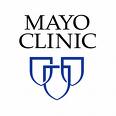 cancer patients. It is a fact that a large number of women, who survive breast cancer, suffer from a cancer surgery adverse condition, lymphedema, which includes accumulating of fluids in the arms causing swelling and disfiguring which significantly interferes with the quality of life. More details about near-infrared fluorescence imaging are highlighted online in the inaugural issue of Biomedical Optics Express.
cancer patients. It is a fact that a large number of women, who survive breast cancer, suffer from a cancer surgery adverse condition, lymphedema, which includes accumulating of fluids in the arms causing swelling and disfiguring which significantly interferes with the quality of life. More details about near-infrared fluorescence imaging are highlighted online in the inaugural issue of Biomedical Optics Express.http://www.healthimaginghub.com/article/1742-near-infrared-fluorescence-imaging-offers-new-option-for-lymphedema-patients.html
 starting to deal with companies that provide remote
starting to deal with companies that provide remote  The technique is used as a powerful diagnostic tool for patients with risk for strokes. In a recent study, researchers from Mayo Clinic, Rochester, Minn. are trying to develop new ways to reduce radiation doses accompanied with perfusion and other CT procedures.
The technique is used as a powerful diagnostic tool for patients with risk for strokes. In a recent study, researchers from Mayo Clinic, Rochester, Minn. are trying to develop new ways to reduce radiation doses accompanied with perfusion and other CT procedures.